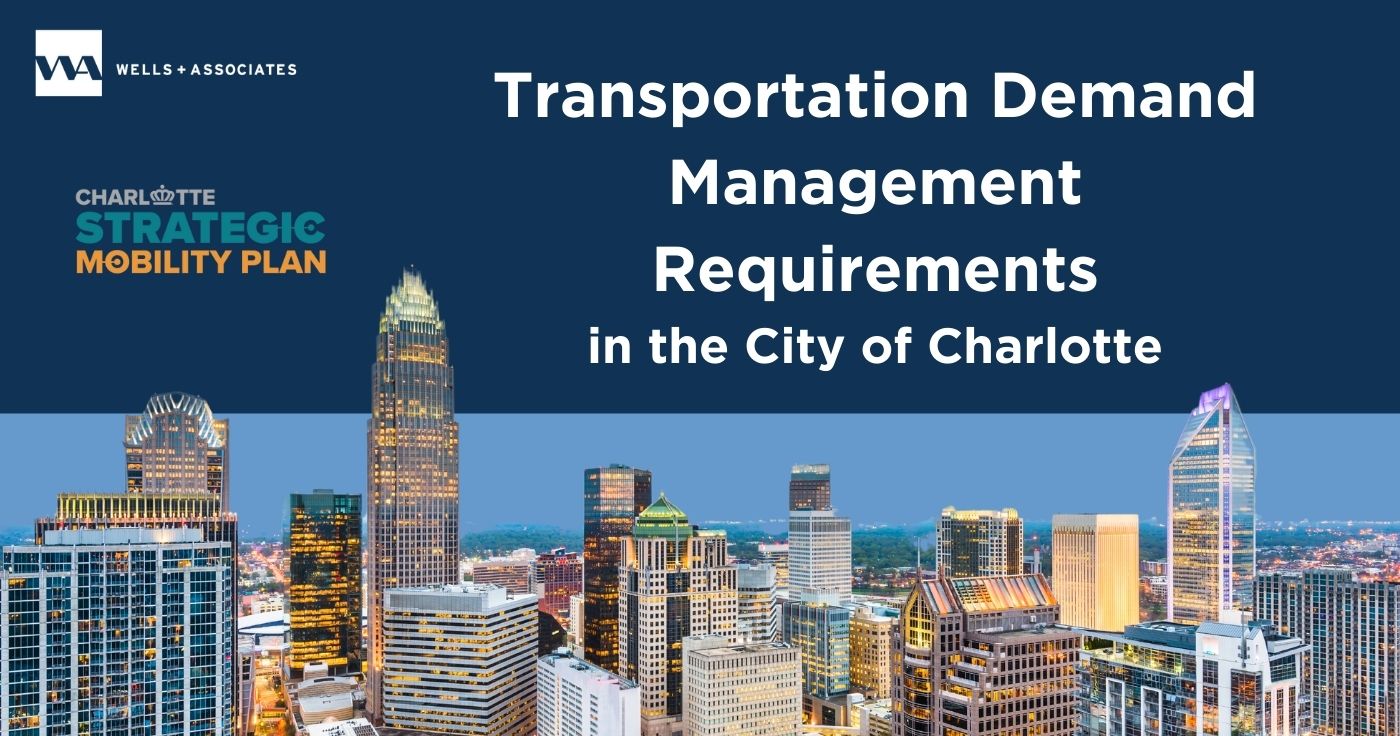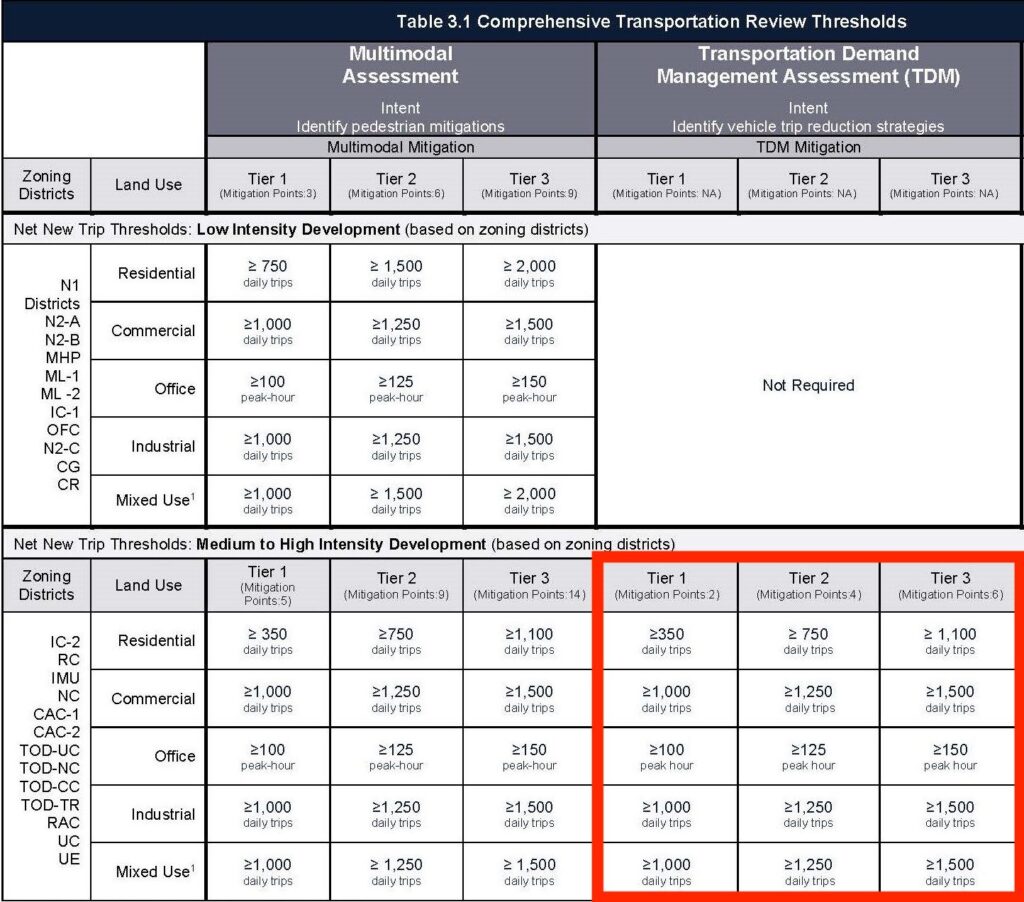Transportation Demand Management (TDM) Assessments in the City of Charlotte may be required for certain developments in medium- to high-intensity zoning districts based on the development’s anticipated auto trip generation. If you are working on a development in Charlotte, it would be wise to familiarize yourself with the City’s three Tiers of TDM Assessments based on anticipated auto trip generation for developments.
Why Are TDM Assessments Required in Charlotte?
TDM assessment requirements are part of Charlotte’s Comprehensive Transportation Review (CTR) Guidelines and support the City’s transportation mode shift goal by reducing the need for and reliance on cars. Or, as the City states:
“the intent of a Transportation Demand Management (TDM) assessment is to identify site-specific and development-related ways to reduce single occupant vehicle trips and encourage alternative modes of transportation.”
Other transportation assessments required under the CTR guidelines are traffic impact studies (TIS) and multimodal assessments.
The thresholds that trigger TDM Assessments are shown in this excerpt from Table 3.1 of the Charlotte Streets Manual. (See our Charlotte CTR Guidelines article for the complete Table 3.1, including thresholds for traffic impact studies and multimodal assessments.)
TDM Assessments: Strategies to Increase Alternative Transportation Modes
TDM Assessments recommend strategies that developments will implement to increase the use of alternative transportation modes while reducing the reliance on single-occupancy car trips. These strategies can include site-operated programs such as transit fare subsidies and physical infrastructure improvements such as bike trails and wayfinding signage. Also included are active transportation and transit strategies to improve the City’s multimodal and transit networks and parking management strategies.
Answering these key questions will help determine which strategies to choose:
- Do the TDM strategies work effectively at this type of land use in this setting?
- How much do those strategies cost to implement and maintain over the property’s life span?
- What do your property’s tenants value most as amenities to help lease up?
A summary of the TDM Assessment should be included in the CTR Report submitted to the City for review and approval. If no TIS is required, the TDM summary should be submitted in table form in the construction plan/rezoning as part of the land development review process.
The TDM Plan will include:
- Documentation of required TDM mitigation points
- A list of proposed TDM mitigation strategies, including point values
- Plans, descriptions, and locations of any physical TDM mitigations proposed
In addition, the City of Charlotte requires property owners to designate a TDM Coordinator for their site, if a TDM plan is needed. The TDM coordinator serves as the city’s point of contact for all TDM Plan creation and implementation. The city and property owner will evaluate the effectiveness of each strategy and may elect to discontinue or elect new strategies over time.


